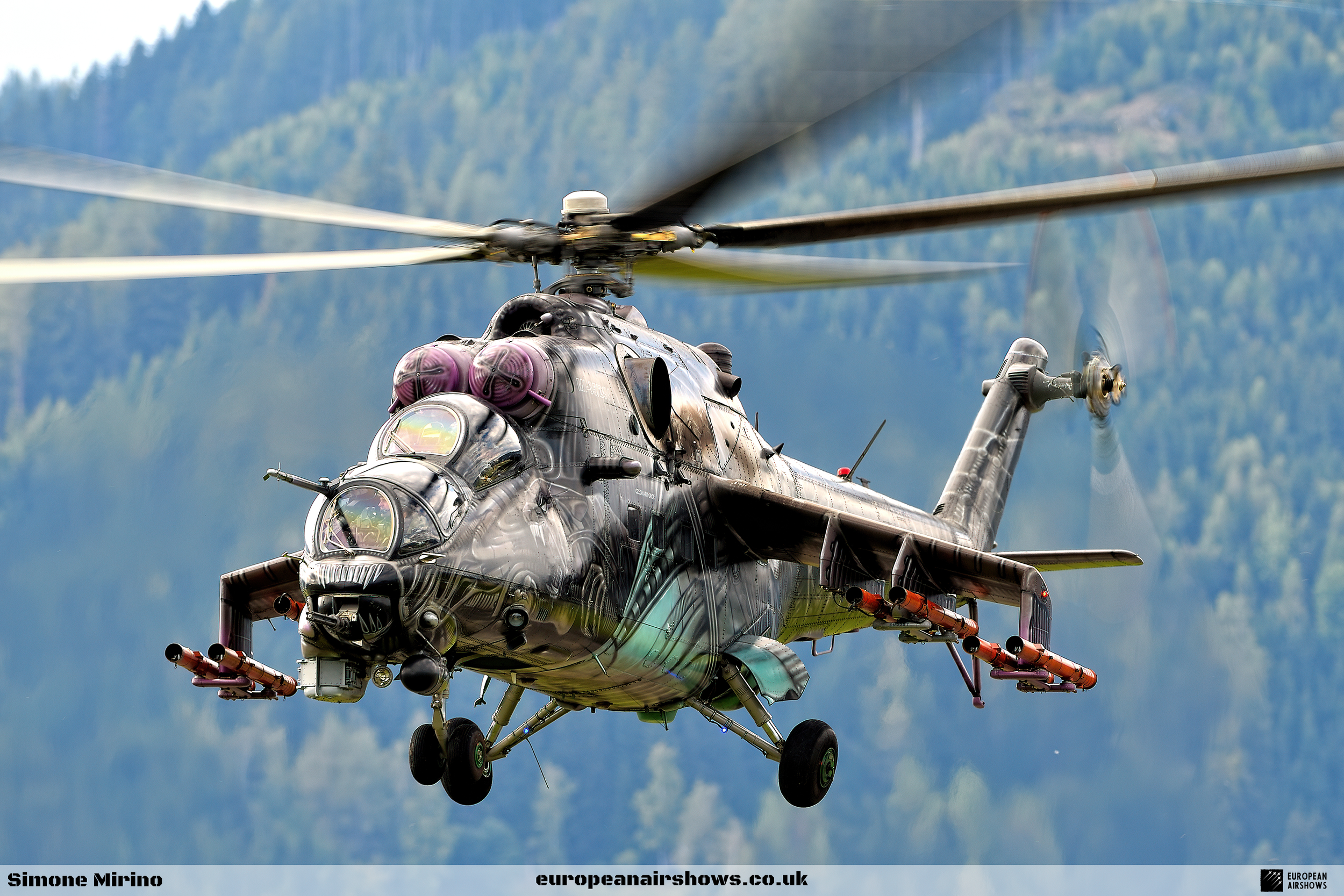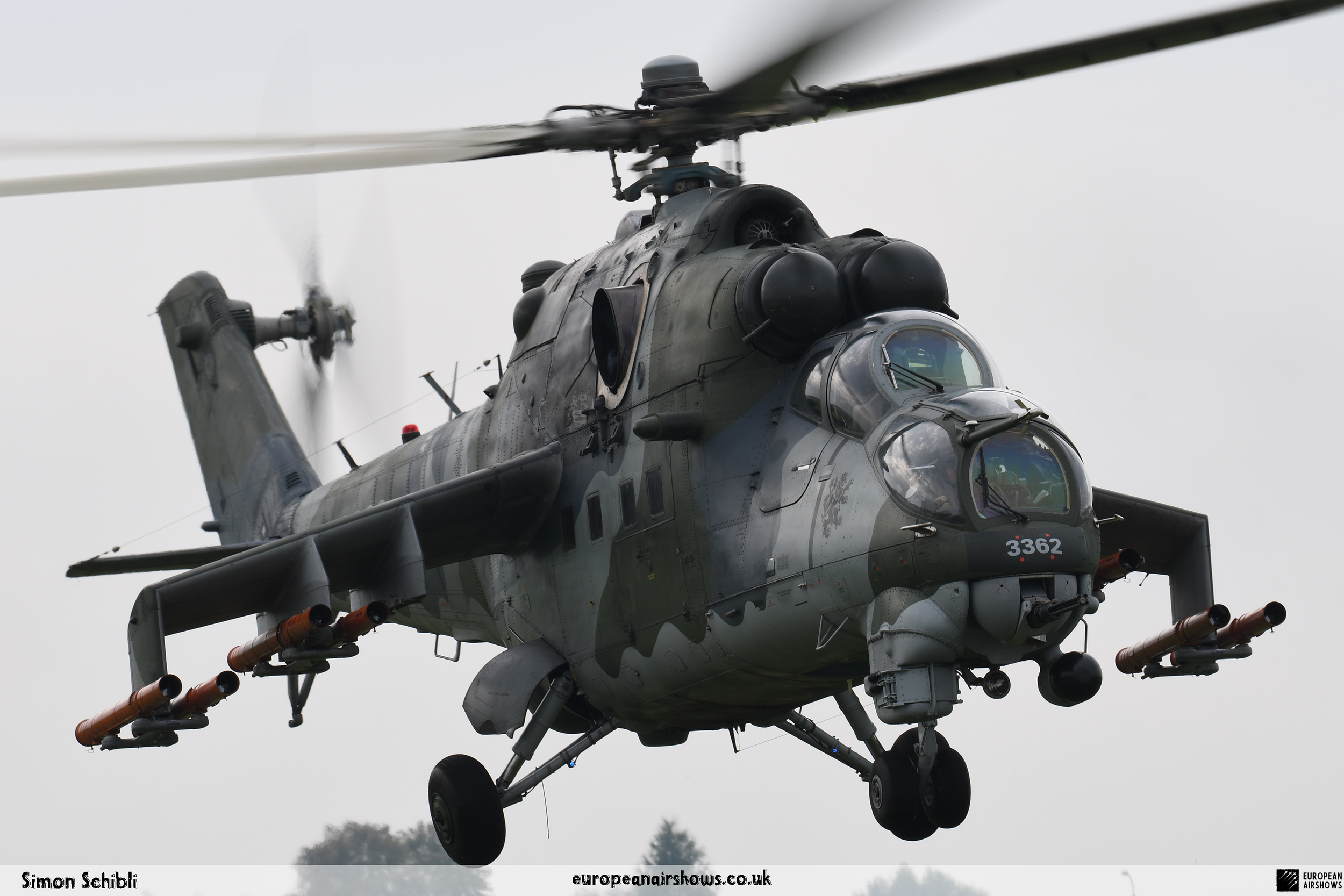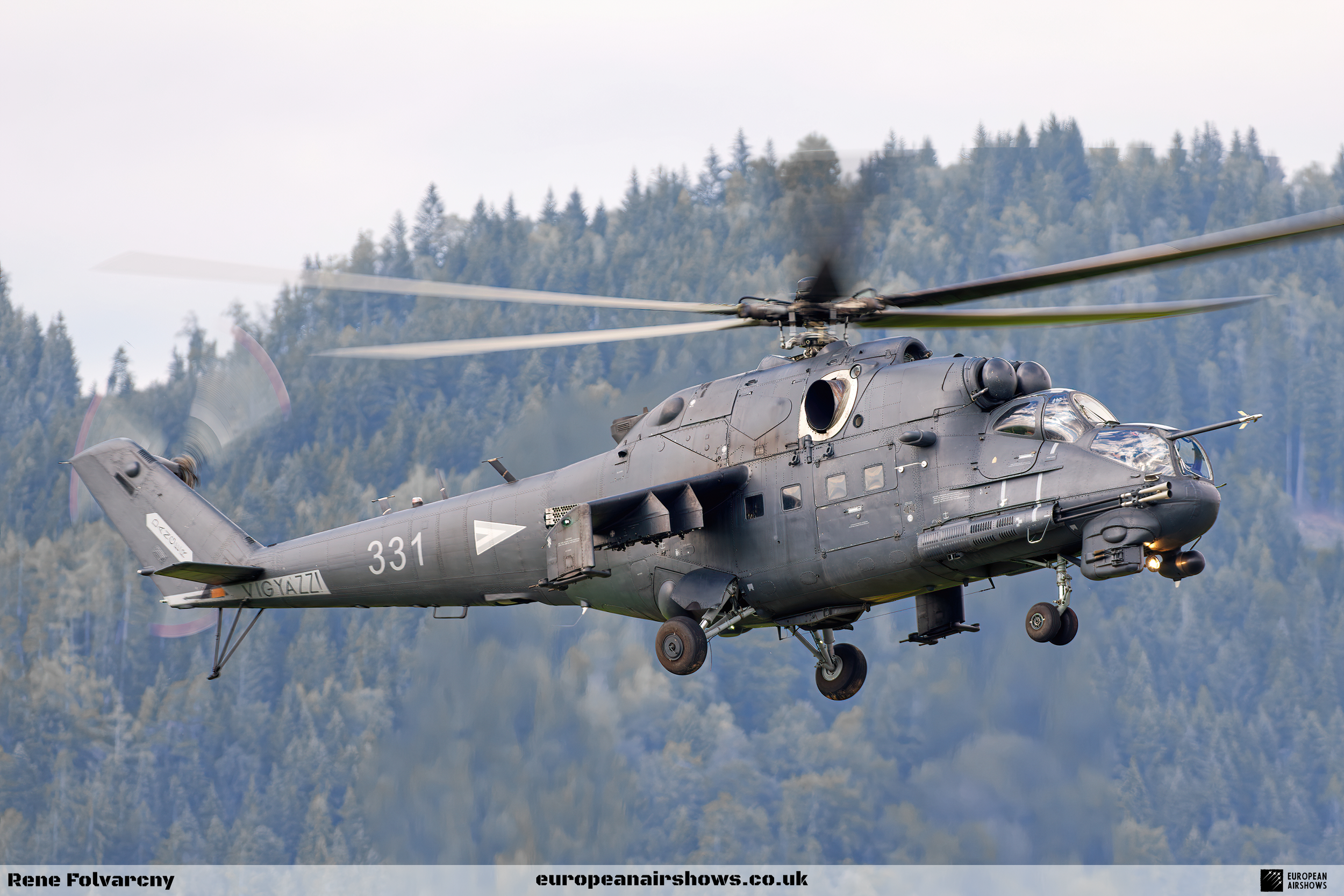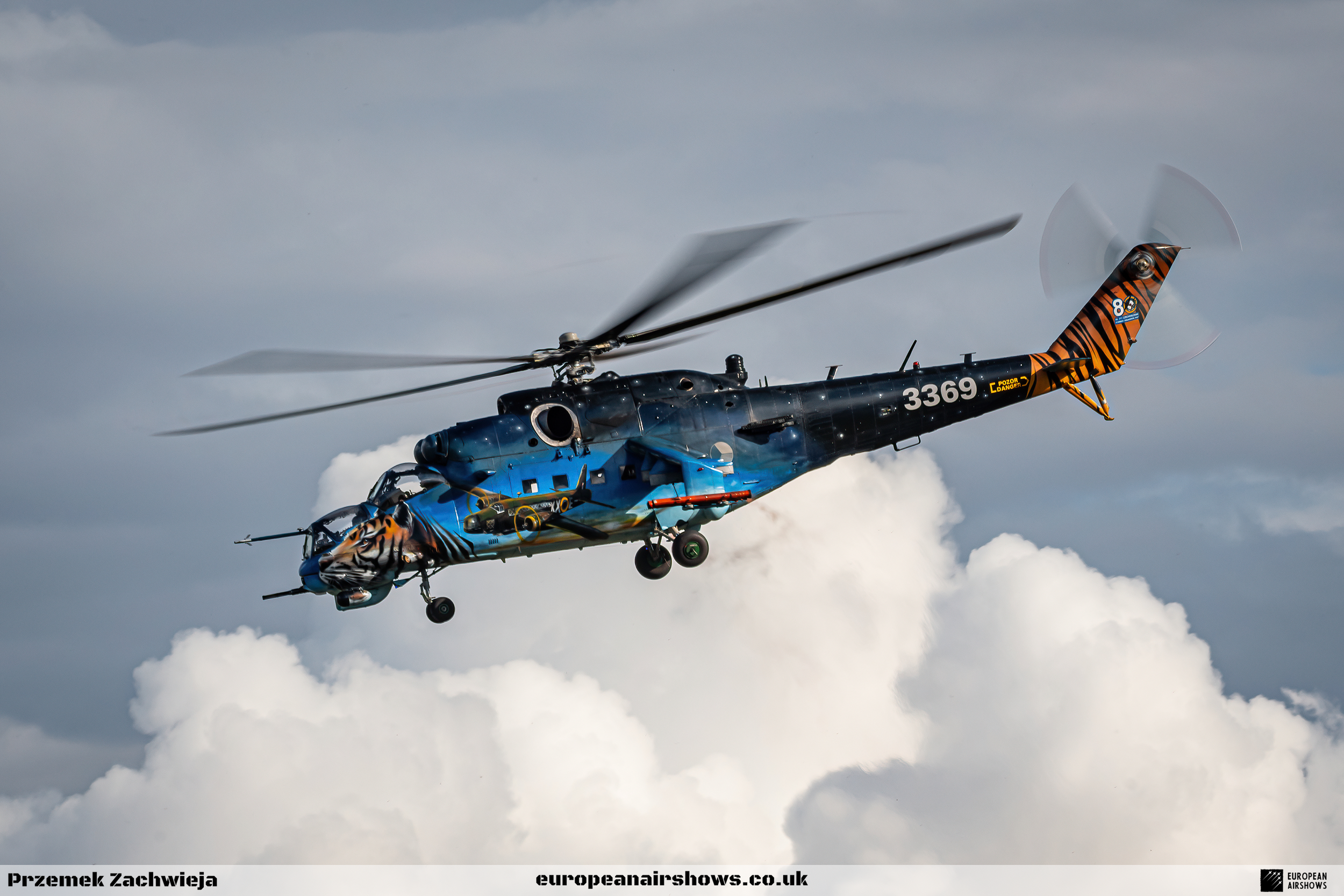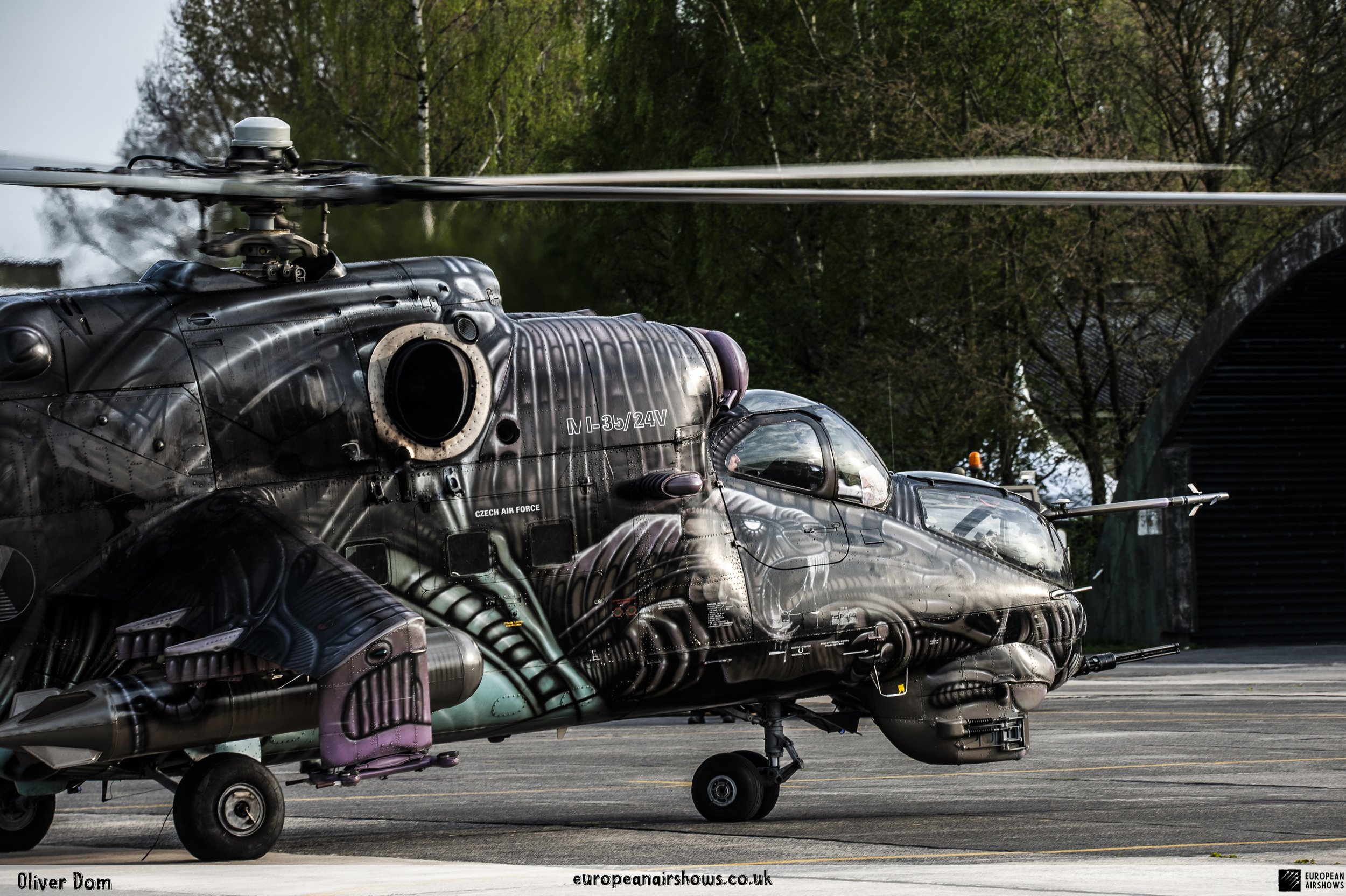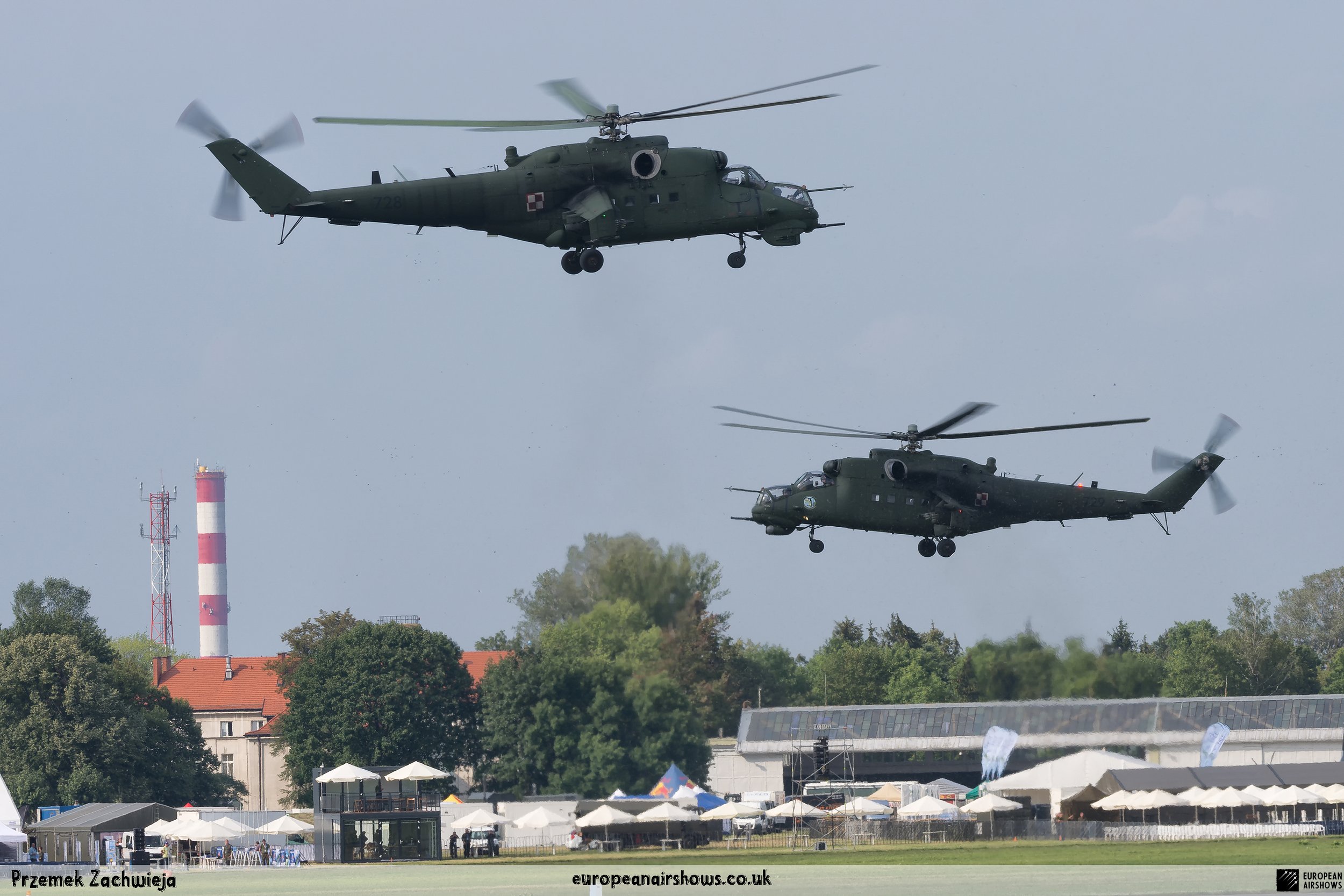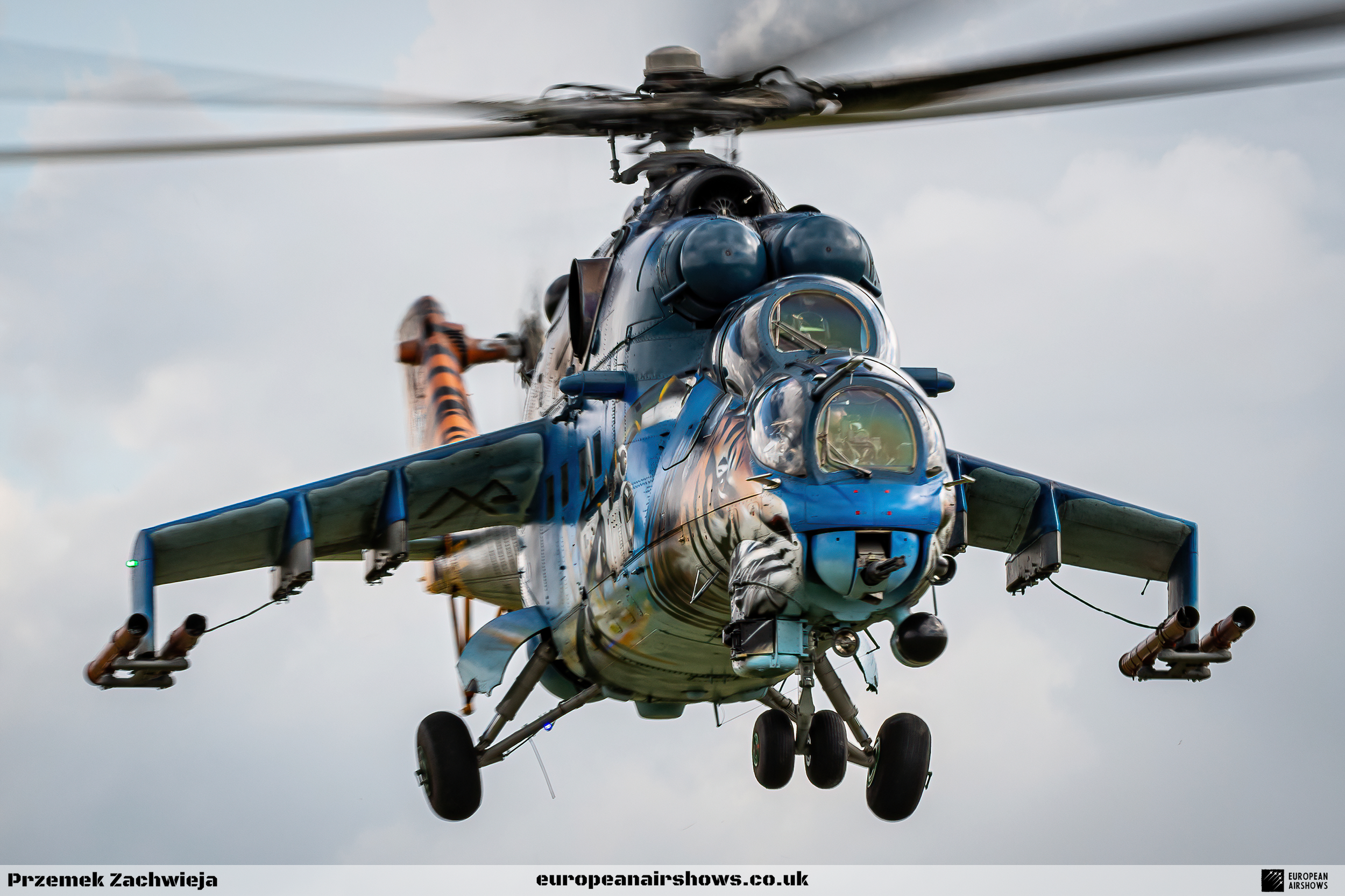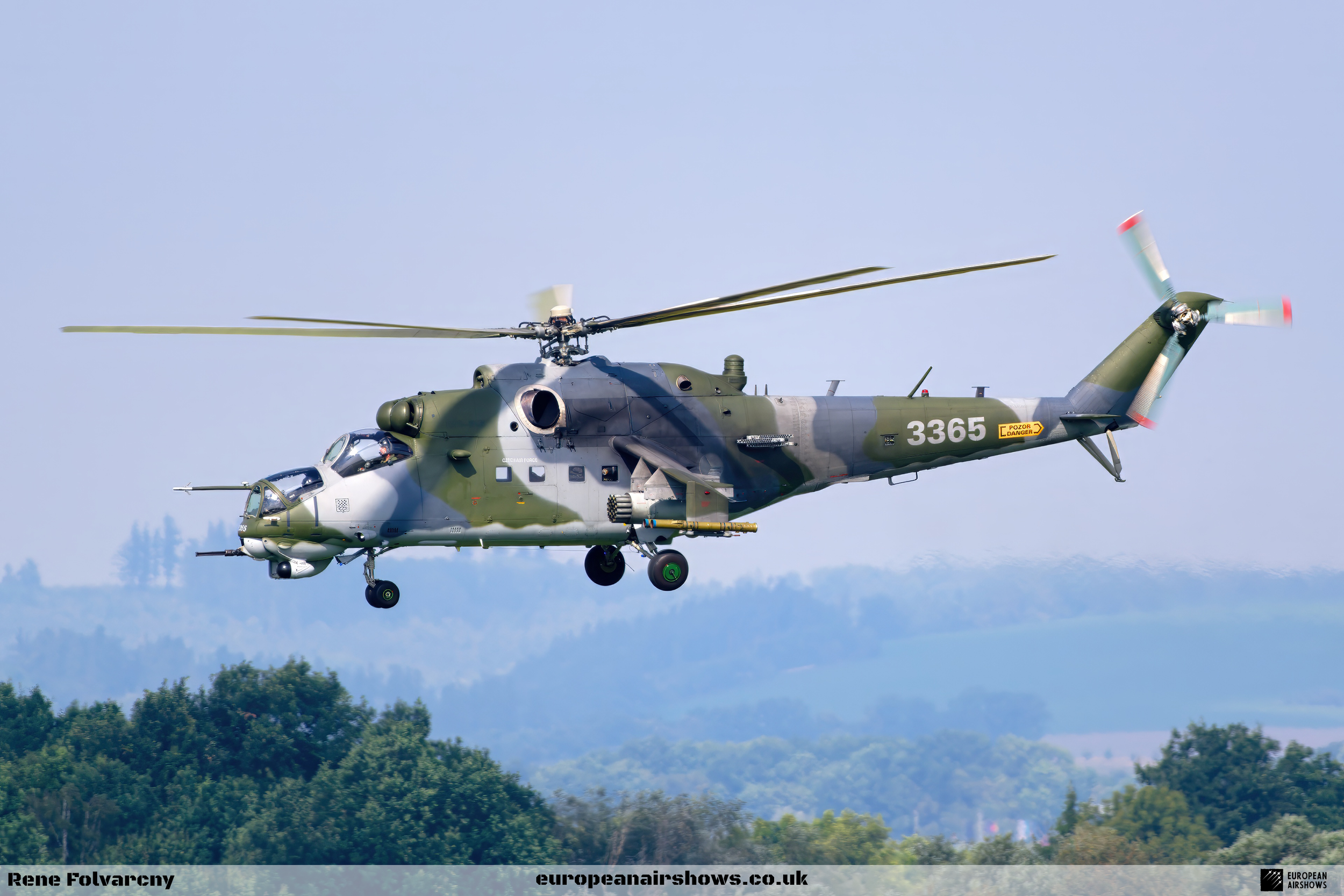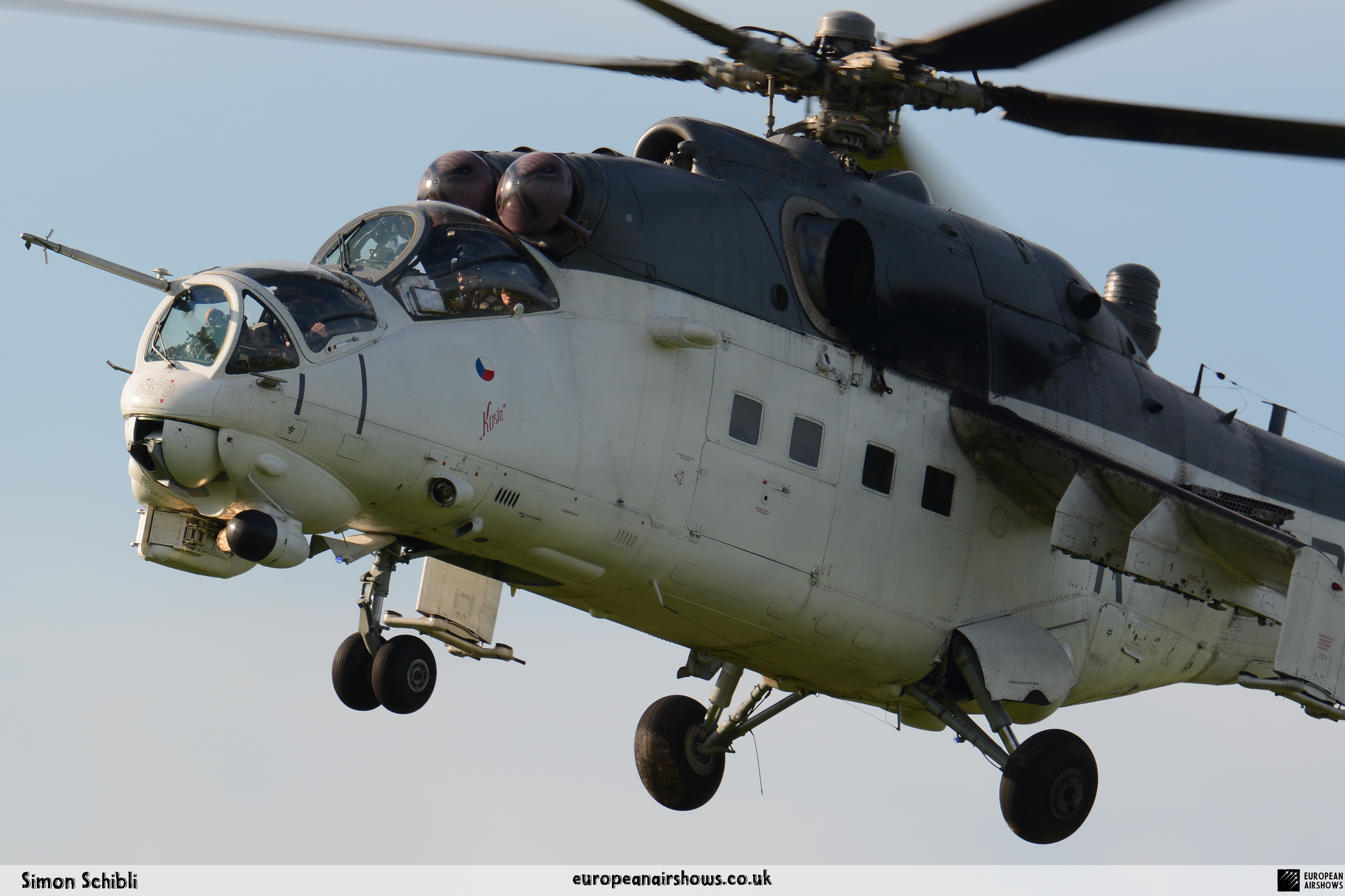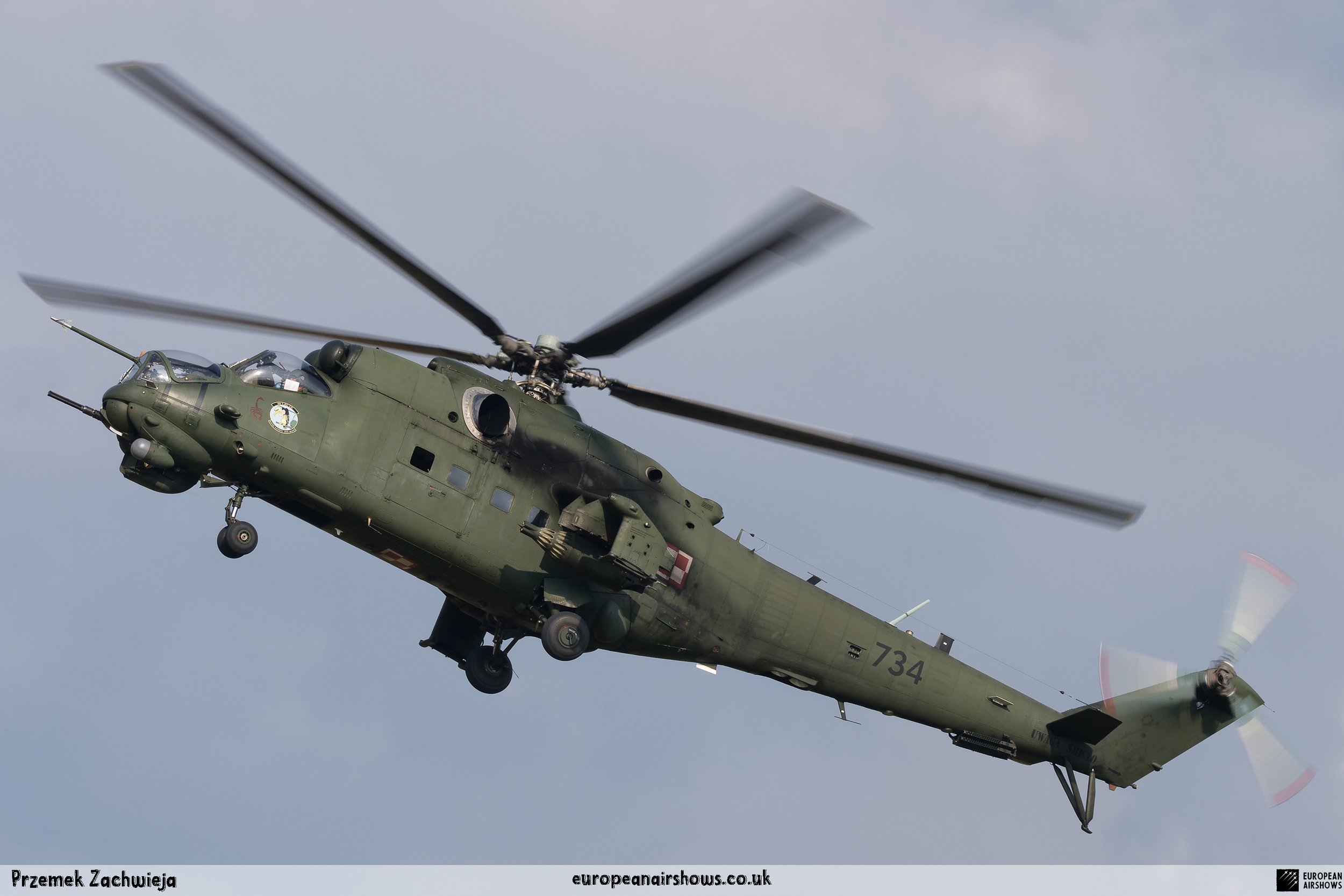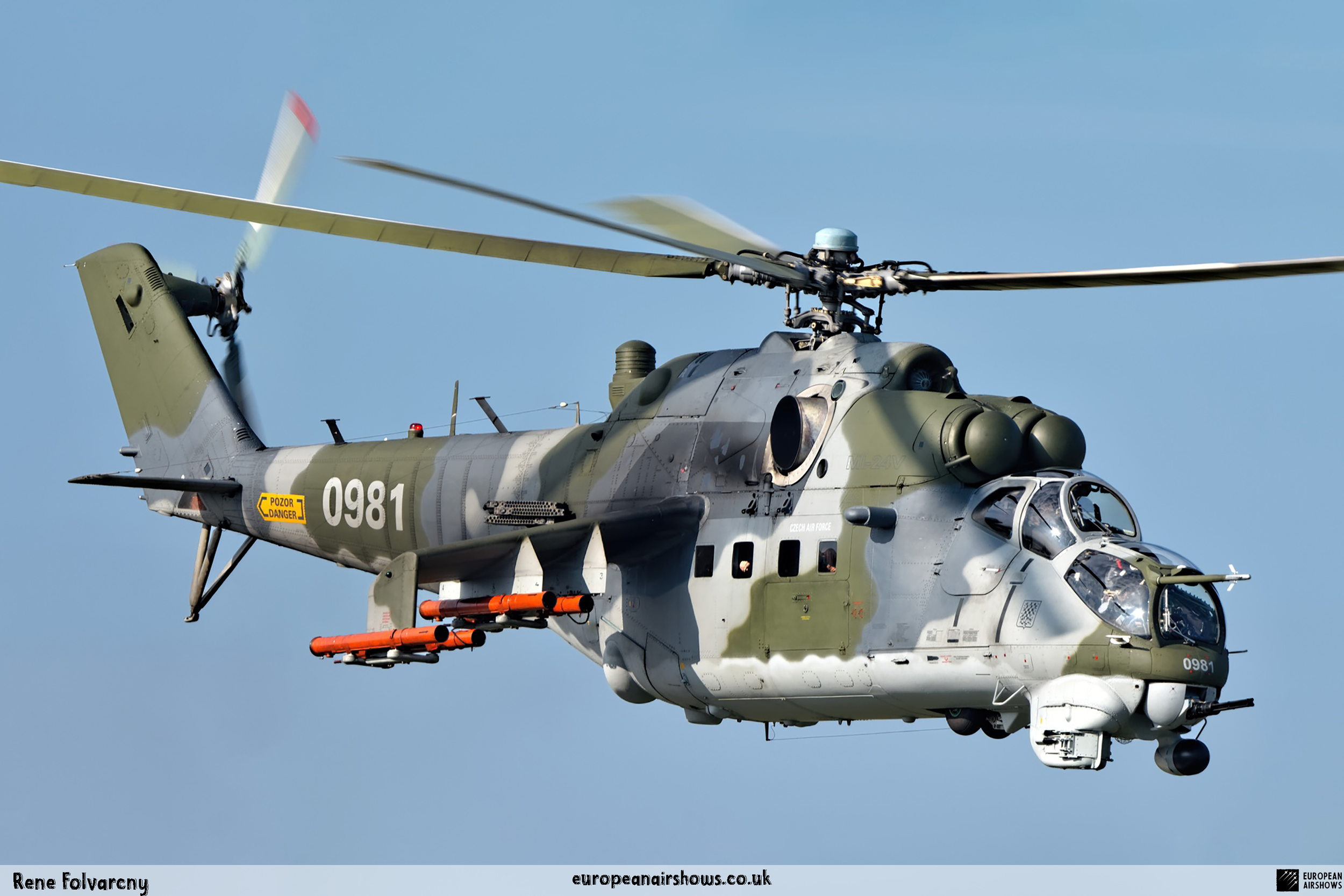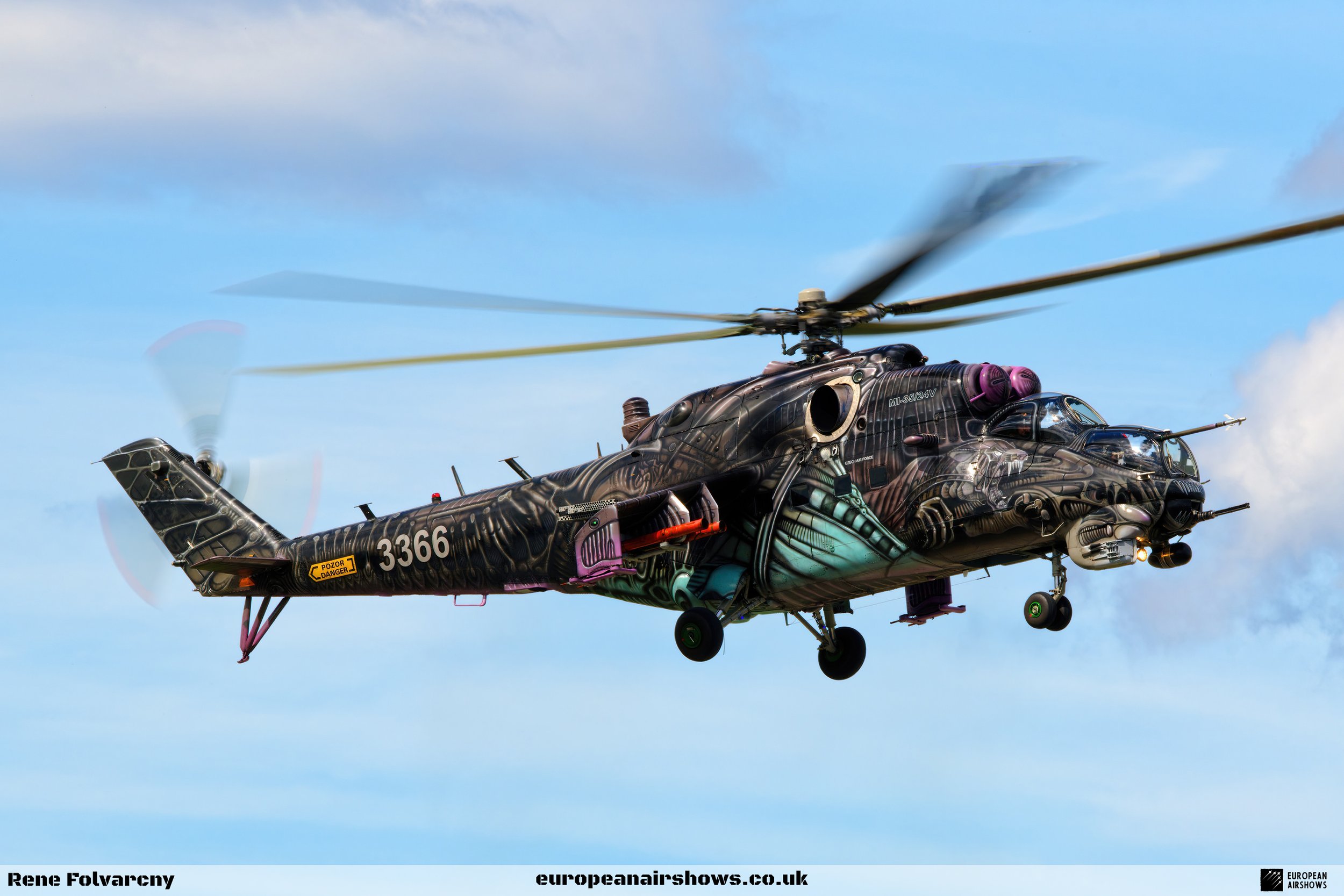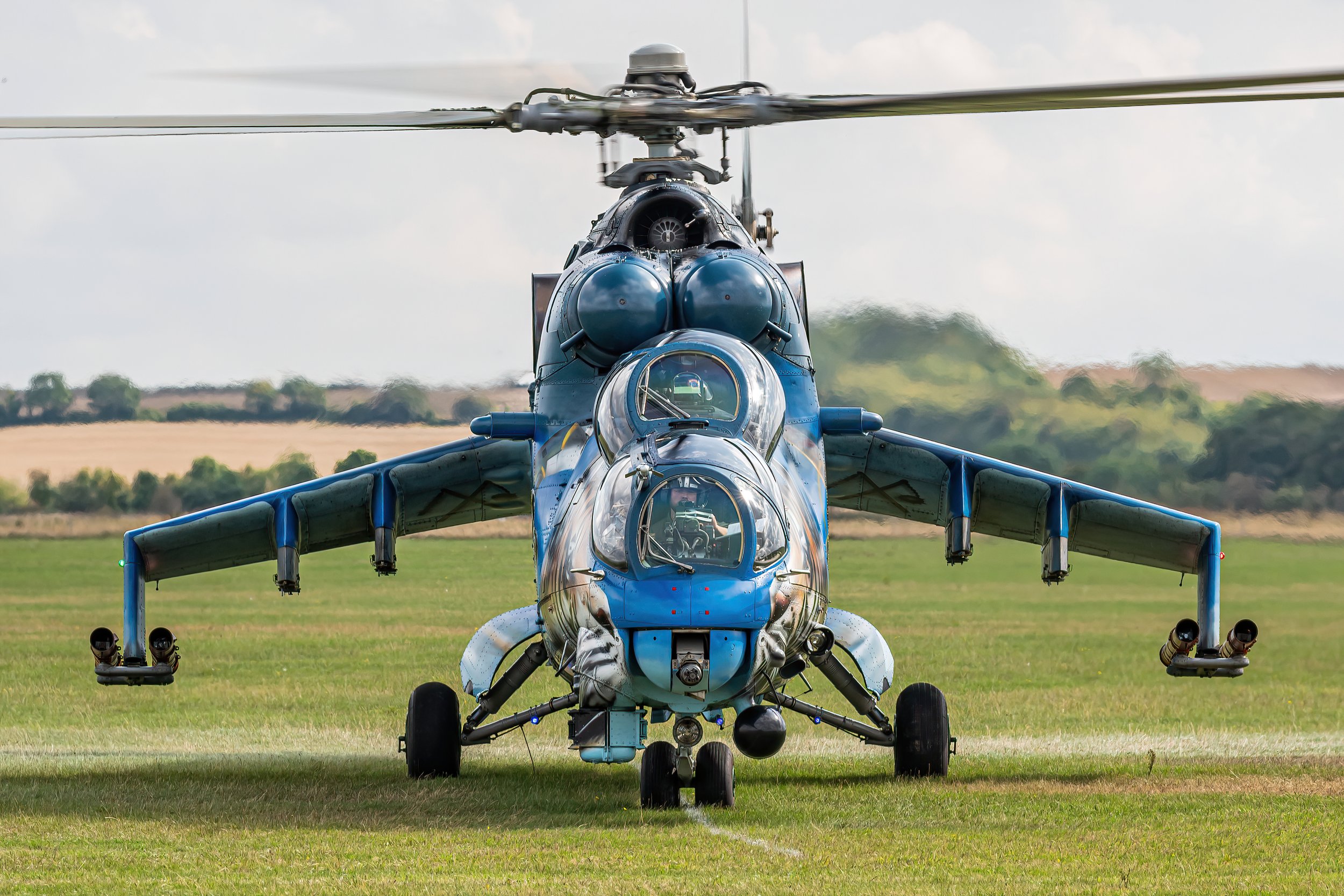
September 19 / Mil Mi-24 first flight
First Flight 19 September 1969
Mil Mi-24
The Mil Mi-24, a helicopter that has become synonymous with the concept of an armed transport aircraft, boasts a rich history that intertwines with the military conflicts of the late 20th century and beyond. Developed by the Mil Moscow Helicopter Plant in the 1960s, the Mi-24 was conceived in response to the pressing need for a versatile aircraft capable of both troop transport and close air support. Unlike traditional helicopters that were primarily designed for either transport or attack roles, the Mi-24 was groundbreaking in its dual functionality, allowing it to carry soldiers into battle while simultaneously providing them with fire support.
The design of the Mi-24 is characterized by its distinctive tandem rotor configuration, which consists of two large rotors mounted one behind the other. This design choice not only enhances stability and manoeuvrability but also allows for a larger payload capacity. The helicopter can accommodate up to eight fully equipped soldiers in its rear cabin, making it an effective platform for rapid troop deployment. Its fuselage is heavily armoured, providing protection against small arms fire and shrapnel, critical features for an aircraft operating in frontline combat scenarios.
The Mi-24’s cockpit is positioned at the front, where the pilot and co-pilot benefit from excellent visibility, a crucial aspect in combat situations. The helicopter is powered by two powerful engines, typically the Ivchenko AI-24V or the more modern TV3-117, which enable it to achieve impressive speeds and climb rates. This power allows the Mi-24 to operate effectively in various environments, from the rugged terrains of Afghanistan to the more urban landscapes encountered in modern conflicts.
One of the defining features of the Mi-24 is its formidable armament. The helicopter is equipped with a 12.7 mm machine gun mounted on a flexible turret under the nose, providing the crew with the ability to engage ground targets effectively. Additionally, the Mi-24 can carry an array of weapons on its hardpoints, including anti-tank missiles, rockets, and bombs. This versatility in armament allows it to adapt to various combat scenarios, whether it’s engaging armoured vehicles, providing close air support for ground troops, or conducting anti-insurgency operations.
The Mi-24 made its combat debut during the Soviet-Afghan War, which began in 1979. The challenging mountainous terrain of Afghanistan presented unique operational challenges, and the Mi-24 quickly proved to be an invaluable asset for Soviet forces. Its ability to transport troops directly into combat zones while providing them with fire support was a game-changer. The helicopter’s presence on the battlefield often turned the tide in favour of Soviet troops, as it could deliver both soldiers and firepower in a single, rapid deployment.
However, the Mi-24 was not without its vulnerabilities. The introduction of advanced anti-aircraft weapons, particularly the U.S.-supplied Stinger missiles to Afghan mujahideen fighters, posed a significant threat. These shoulder-fired missiles were highly effective against low-flying helicopters, leading to substantial losses for Soviet forces. Despite these challenges, the Mi-24’s operational capabilities and adaptability allowed it to remain a formidable presence throughout the conflict.
As the Cold War progressed, the Mi-24 continued to evolve. Various variants were developed to enhance its capabilities, including the Mi-24D, which featured improved avionics and weapon systems, and the Mi-24V, known for its advanced targeting systems and upgraded armour. These improvements ensured that the Mi-24 remained competitive against newer helicopter designs emerging from NATO countries.
The end of the Cold War did not mark the end of the Mi-24’s relevance. The helicopter found itself in various regional conflicts around the world, including those in Africa, the Middle East, and the Balkans. Its versatility allowed it to be employed in diverse roles, from counterinsurgency operations to peacekeeping missions. Countries that had been aligned with the Soviet Union during the Cold War continued to rely on the Mi-24, recognizing its combat-proven capabilities and adaptability.
In the years following the Cold War, the Mi-24 underwent further modernization efforts. Many countries began to upgrade their fleets with new avionics, weapons systems, and enhanced survivability features. This modernization ensured that the Mi-24 could continue to operate effectively in contemporary combat environments, where the threats posed by advanced anti-aircraft systems and enemy fighters had evolved significantly.
The Mi-24 has also been involved in humanitarian and peacekeeping missions, showcasing its versatility beyond traditional combat roles. Its ability to transport troops and supplies to remote or inaccessible areas has made it an essential asset in disaster relief operations, showcasing the helicopter’s adaptability in various operational contexts.
As of today, the Mil Mi-24 remains in service with numerous air forces around the globe, including those of Russia, India, and several African nations. Its legacy is a testament to the innovative spirit of military aviation during the Cold War and its ability to adapt to the ever-changing landscape of modern warfare. The Mi-24 has not only shaped the way helicopters are designed and utilized but has also left an indelible mark on the history of military aviation, embodying the principles of versatility, firepower, and resilience.
Mi-24 Facts
Dual Role Design: The Mi-24 was designed as both an attack helicopter and a transport aircraft. It can carry troops in addition to its weaponry, allowing it to provide close air support while also transporting soldiers to and from the battlefield.
First Flight: The Mi-24 made its first flight in 1969 and entered service with the Soviet Armed Forces in 1972. Its unique design combined the features of a gunship and a troop transport, making it a versatile asset.
Distinctive Appearance: The Mi-24 is recognizable for its large size, tandem cockpit, and distinctive “beak” shape. The cockpit is designed for a pilot and a gunner, with the gunner operating the helicopter’s weapons systems.
Armament Variety: The Mi-24 is equipped with a wide range of armaments, including machine guns, rocket pods, and anti-tank missiles. The helicopter can be armed with up to 16 AT-6 Spiral (NATO: AT-2 Swatter) anti-tank missiles, making it a formidable platform against armoured vehicles.
High Speed and Agility: The Mi-24 is one of the fastest helicopters of its class, capable of reaching speeds of around 335 km/h (208 mph). Its speed and agility make it effective in both attack and evasive manoeuvres.
Combat Experience: The Mi-24 has seen extensive combat in various conflicts around the world, including the Soviet-Afghan War, the Iran-Iraq War, and conflicts in Africa and the Balkans. Its effectiveness in combat has made it a popular choice for many nations.
Export Success: The Mi-24 has been exported to numerous countries and has been produced under license in several nations. Variants of the Mi-24 have been operated by countries such as Poland, Czechia, and Hungary.
Survivability Features: The Mi-24 is designed with survivability in mind, featuring armoured cockpits and critical components to protect the crew from small arms fire and shrapnel. This design enhances its effectiveness in combat situations.
Multiple Variants: There are several variants of the Mi-24, including the Mi-24A, Mi-24D, Mi-24V, and Mi-24P, each with different upgrades and capabilities. The Mi-24P variant, for example, features a more powerful cannon and improved avionics.
Codename: NATO gave the Mi-24 the codename "Hind" in 1972, as all NATO codenames for Soviet helicopters began with the letter "H". However, Soviet aircrews always called the helicopter the "krokodil" or "crocodile".
